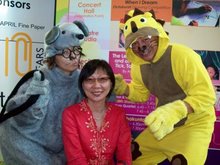===
Published on Oct 5, 2012
How to be happy in life.
http://www.youtube.com/watch?annotation_id=annotation_718559&feature=iv&src_vid=HoFNs-3r0Go&v=sycZZrYvCNw
=====
http://www.youtube.com/watch?annotation_id=annotation_718559&feature=iv&src_vid=HoFNs-3r0Go&v=sycZZrYvCNw
=====
Be happy with practical stress management tips & resilience tips for staying happy, positive, healthy and sane with Mark Walsh of Integration Training and Achilles. The basics of how to be happy - exercise and sleep, centring , cognitive reframing, gratitude, social support and humour are discussed.
cover the physical basics - stuff my mum said - food, sleep, water, toxin intake, also touch. Need to have a minimum in in all of these - you can't cheat your basic biological system
- social support and empathy
- centre
- reframe your thoughts - realistic optimism, avoid resentment and victim thinking. It's ourt thinking about events not the events themselves that creates stress
- acceptance - illusion of control and this is stressful
- play and recreation
- exercise - relaxed like tai chi or yoga, or fast like squash or running to burn off some energy
- Meditate - evidence base -it works better than drugs
- manage environment - order and beauty, nature helps
- gratitude
- humour
This video includes the "embodied" approach.
The embodied work practiced by Mark Walsh and Integration Training is based upon a number of disciplines such as aikido, meditation, body therapy and dance.
It is strongly influenced by teachers such as Dr Richard Strozzi-Heckler and the Strozzi Institute (http://www.strozziinstitute.com/), Paul Linden (http://www.being-in-movement.com/), Wendy Palmer (http://embodimentinternational.com/) and Dylan Newcomb (http://www.uzazu.org/). These people are all masters in the field.
=====
Source of information:
http://www.youtube.com/watch?annotation_id=annotation_718559&feature=iv&src_vid=HoFNs-3r0Go&v=sycZZrYvCNw
Source of information:
http://www.youtube.com/watch?annotation_id=annotation_718559&feature=iv&src_vid=HoFNs-3r0Go&v=sycZZrYvCNw

